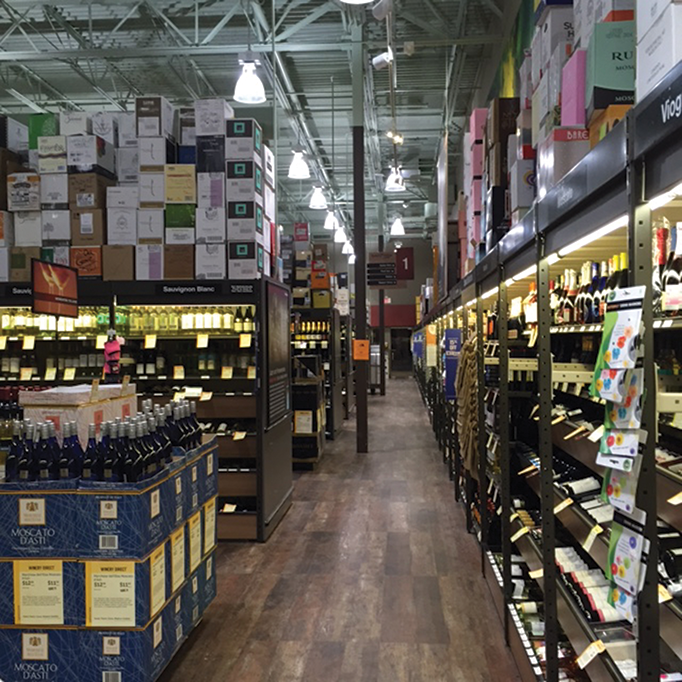
Going into a Total Wine & More store is a bit like entering Doctor Who’s Tardis — the place is modest-looking on the outside, large on the inside. The aisles, stocked with alcoholic beverages stretching out into the distance, typically hold about 8,000 varieties of wine, 3,000 types of spirits and some 2,500 different beers. The organization of these aisles is tight, with selections categorized by country of origin or by variety — making it easy for those shoppers who know what they want, and interesting for those who seek something new.
The shops also carry alcohol accessories, such as mixers, glassware, bar tools, home-brew kits and novelty items, and even cigars. “We don’t mind when people call us the Whole Foods of liquor,” said Ed Cooper, a company spokesman. What distinguishes a Total Wine & More store from a typical large liquor store is the expertise of the shop’s employees, Cooper says. About three-quarters of the staff people work full time, and they have spent between 100 and 150 hours learning about beer, wine and spirits as part of their training (and most of them are already quite knowledgeable even before they are hired).
“All of our wine team members, for instance, participate in extensive training programs, weekly team wine tastings and monthly wine producer seminars,” Cooper said. “Many travel to wine-making regions to meet our producers and learn about new and interesting products — information they can share with customers.” The specialists in spirits and beer receive similar preparation.
Total Wine & More seeks to benefit from Americans’ growing infatuation with wine and their continuing love of beer and spirits. In 2014 Americans consumed about 893 million gallons of wine, or 2.8 gallons per capita, according to the Wine Institute, and about 25 percent of that was imported. This stands in contrast to 1964, when Americans drank less than a gallon per capita. Consumption is expected to rise into the 2020s, if the habits of the Millennial generation are any indication. Millennials consumed 42 percent of all the wine sold in the U.S. last year, surpassing the boomers and Generation X, notes a recent survey by the Wine Market Council.
Like many a growing chain, Total Wine & More traces its roots back to a single successful store. Brothers David and Robert Trone opened the first of these in Claymont, Del., in 1991. Today there are 132 Total Wine & More stores across 18 states. The company anticipates opening 20 this year, the most in any year since it began operating, and three more than last year. Among the new locations for this year are Houston; Milwaukee; and Nashville, Tenn. By the end of this year, the chain will have a presence in 22 states.
Typically, Total Wine & More stores measure about 30,000 square feet. The company looks for community and power centers in relatively affluent areas and frequently retrofits a second-generation space, such as a former electronics retailer or bookstore. Said Cooper: “Landlords love us for that.”
For leasing information, contact Phil Armstrong, vice president of real estate, at darmstrong@totalwine.com.